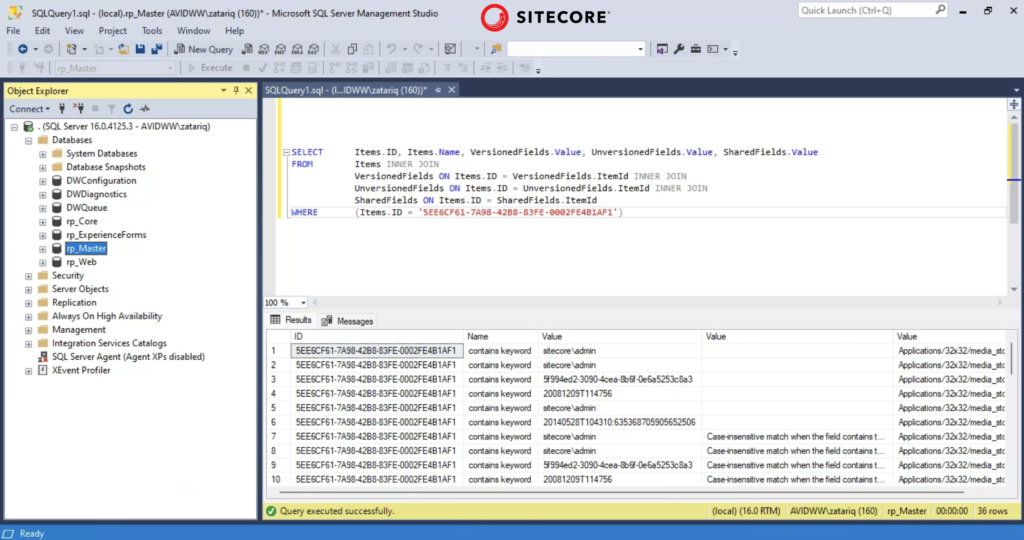In the world of content management, Sitecore is a top choice for handling large amounts of data. It comes with APIs and tools for managing its system, but another effective way to get data is by using SQL queries on its databases. This method has its own benefits, making it a useful option for developers in some cases when you need access to data quick and fast.
This method is also useful for cases when you do not want to deploy or run anything on your Sitecore instance directly. Having said that this method also comes with a lot of responsibility as you are directly hitting the database.

Why Use SQL Queries for Sitecore Data Export?
SQL queries provide access to Sitecore’s databases, allowing quick view of data without the overhead of API calls or application layers. This method is particularly beneficial for:
- Bulk Data Export: Exporting large volumes of data quickly and efficiently, which is useful for tasks such as migrating content between environments or creating backups.
- Custom Reporting: Generating custom reports that require data from specific fields or content types within Sitecore, enabling detailed analysis and insights.
- Integration with External Systems: Facilitating seamless integration with external databases, analytics platforms, or business intelligence tools by extracting Sitecore data in a structured format.
Connecting to SQL Server Using SQL Server Management Studio:
To execute SQL queries, you can use SQL Server Management Studio (SSMS). SSMS is a free, integrated environment for managing any SQL infrastructure, including Sitecore databases. You can download SQL Server Management Studio from Microsoft’s official website, install it on your machine, and connect to your Sitecore SQL Server instance. Once connected, you can run the SQL queries provided above or customize them to suit your specific data extraction requirements.
You can also use this tool to connect to remote databases like Azure.
Understanding how Sitecore stores data
You must familiarize yourself with Sitecore’s database schema, including tables and relationships relevant to the data you need to export. This understanding ensures accurate querying of the data.
- Items
Everything in Sitecore is an item and all the items are stored in Items table - VersionedFields
This table stores fields that have different values for different versions and languages of an item. Each entry includes the item ID, field ID, language, version number, and the field’s value. - UnversionedFields
This table stores fields that can have different values in different languages but are the same across all versions of an item. Each record includes the item ID, field ID, language, and the field’s value. - SharedFields
This table contains fields that have the same value across all languages and versions of an item. Each entry includes the item ID, field ID, and the field’s value.
SQL Examples for Sitecore Data Export
You can run these queries on Master or Web database.
Export All Sitecore Items from a Specific Template
SELECT * FROM Items WHERE TemplateID = 'E269FBB5-3750-427A-9149-7AA950B49301'Export Sitecore Item data and Their Fields
SELECT Items.ID, Items.Name, VersionedFields.Value, UnversionedFields.Value, SharedFields.Value
FROM Items INNER JOIN
VersionedFields ON Items.ID = VersionedFields.ItemId INNER JOIN
UnversionedFields ON Items.ID = UnversionedFields.ItemId INNER JOIN
SharedFields ON Items.ID = SharedFields.ItemId
WHERE Items.ID = '5EE6CF61-7A98-42B8-83FE-0002FE4B1AF1')Keywords:
Sitecore SQL queries, data export techniques, SQL Server Management Studio, content management efficiency, custom reporting, Sitecore database management, digital content strategies.
Hashtags:
#SitecoreSQL #DataExport #SQLServerManagementStudio #ContentManagement #CustomReporting #DigitalStrategy #IntegrationEfficiency
